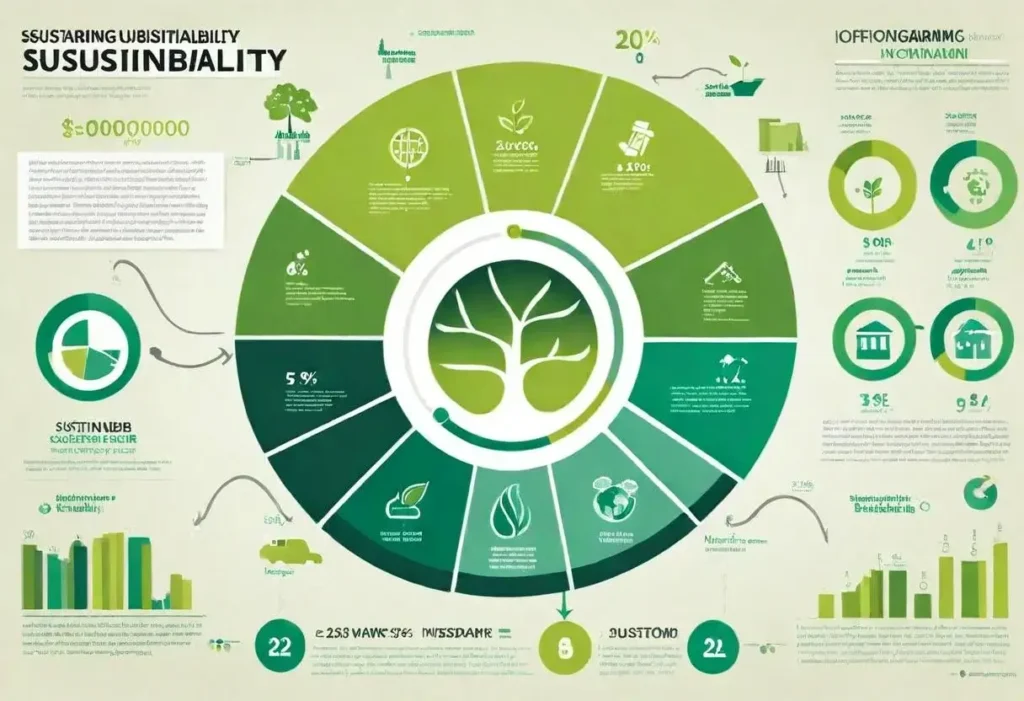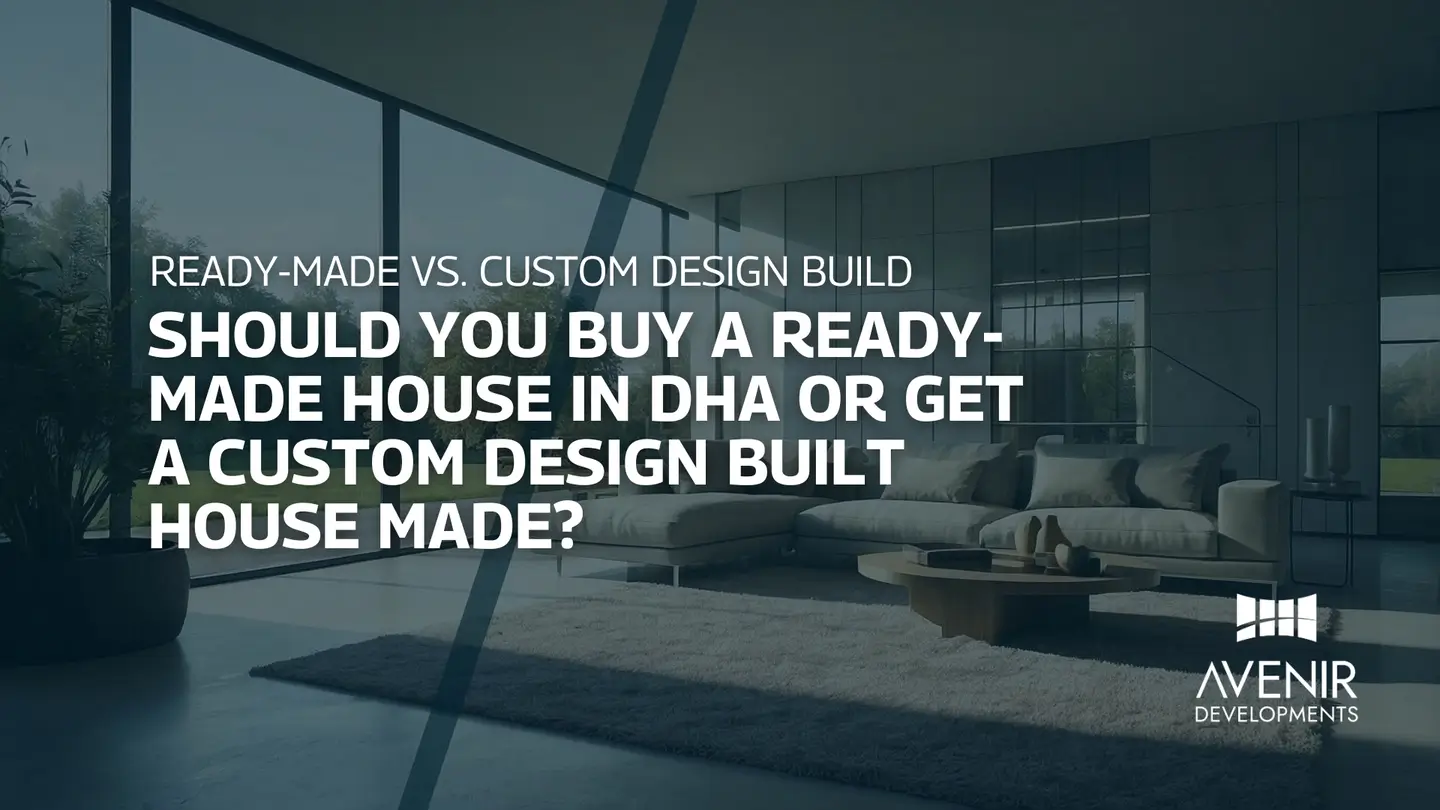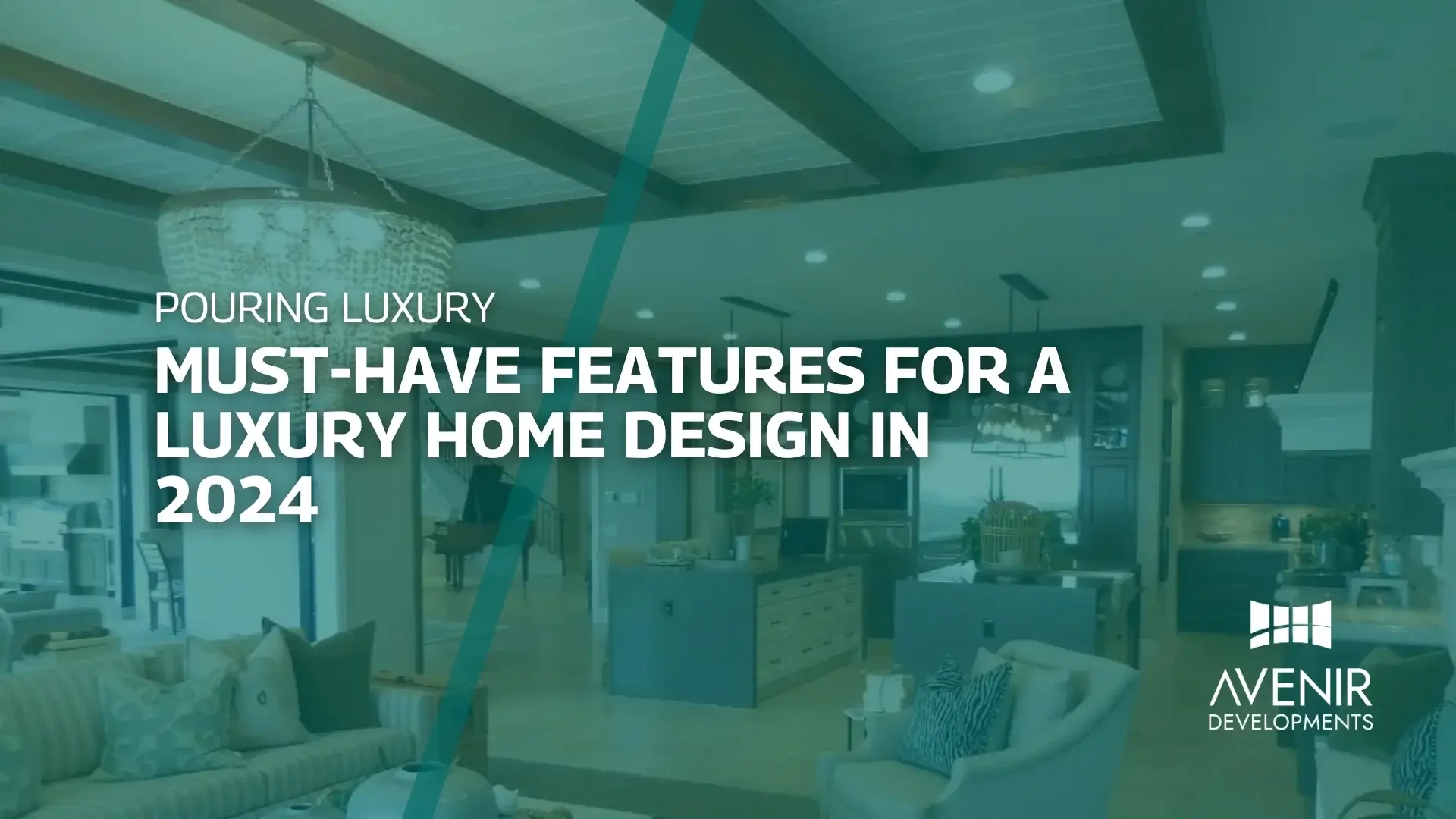Living in Lahore for over 20 years, I’ve witnessed firsthand the city’s incredible growth. DHA Lahore, a prominent planned community, has been at the forefront of this development. However, with this progress comes a growing concern – the environmental impact of large-scale construction. This is where sustainable design for DHA Lahore becomes crucial.
This blog post dives deep into the world of sustainable architecture for DHA Lahore. We’ll explore the concept, its growing importance, and how it can benefit residents and the environment. We’ll also address frequently asked questions and provide expert tips to help you incorporate sustainable design principles into your DHA project.

Let’s build a greener DHA, together!
Understanding Sustainable Architecture and Its Importance
What is Sustainable Architecture?
Sustainable architecture, also known as green architecture, is a design philosophy that prioritizes minimizing a building’s environmental impact throughout its lifecycle. This encompasses the use of eco-friendly materials and construction practices, energy and water efficiency, and creating healthy and comfortable living spaces.
Why is Sustainable Design Important?
The construction industry is a major contributor to global environmental issues. According to the World Green Building Council, buildings are responsible for 36% of global energy consumption and 39% of energy-related CO2 emissions https://worldgbc.org/. In Pakistan, rapid urbanization and reliance on conventional construction methods further exacerbate these problems.
Sustainable design for DHA Lahore offers a path forward. Here’s how it holds significance:
- Environmental Benefits: Reduces energy and water consumption, minimizes waste generation, and promotes the use of renewable resources, ultimately contributing to a healthier planet.
- Economic Benefits: Lowers operational costs for residents through energy and water efficiency. Sustainable buildings often have a higher resale value as well.
- Social Benefits: Creates healthier and more comfortable living environments with improved air quality, natural light utilization, and connection to nature.
- Durability and Resilience: Sustainable design principles often lead to the use of robust and long-lasting materials, resulting in buildings that are more resistant to extreme weather events and require less maintenance over time.
Historical Context and Evolution:
The concept of sustainable architecture has its roots in traditional vernacular building practices that adapted to local climates and resources. In recent decades, with growing awareness of environmental concerns, green architecture has emerged as a prominent movement. Technological advancements in renewable energy, energy-efficient materials, and design software have further propelled the field forward.
Current Relevance:
Today, sustainable design is no longer a niche concept but a necessity. As climate change intensifies and resource depletion becomes a pressing issue, incorporating sustainable practices into construction projects is critical. Sustainable design for DHA Lahore has the potential to set a benchmark for eco-friendly development in Pakistan.
Latest Trends and Developments in Sustainable Architecture
Global Trends:
The global landscape of sustainable architecture is constantly evolving. Here are some key trends to watch:
- Net Zero Buildings: These buildings produce as much clean energy on-site as they consume, significantly reducing their carbon footprint. Advancements in solar technology and building-integrated photovoltaics (BIPV) are making net zero buildings increasingly achievable.
- Biophilic Design: This approach prioritizes integrating nature into the built environment. This can involve incorporating natural light, ventilation, greenery, and using materials that mimic natural textures and patterns. Biophilic design has been shown to improve occupant well-being and productivity.
- Circular Economy Principles: Sustainable design is moving towards a “cradle to cradle” approach, where materials are designed for disassembly and reuse. This minimizes waste generation and promotes a closed-loop system.
- Smart Technologies: Building automation systems, smart meters, and Internet of Things (IoT) applications are being integrated to optimize energy and water usage and improve building performance.
Developments in Pakistan:
Pakistan’s construction sector is gradually embracing sustainable practices. Here are some encouraging developments:
- Green Building Certification Programs: LEED (Leadership in Energy and Environmental Design) and EDGE (Excellence in Design for Greater Efficiencies) certifications are gaining traction in Pakistan, providing a framework for sustainable development.
- Government Initiatives: The Government of Pakistan has launched several initiatives to promote energy-efficient buildings, such as the National Energy Efficiency and Conservation Strategy (NEECS).
- Public Awareness: Public awareness about the benefits of sustainable design is growing, driven by media campaigns and educational programs.
Case Studies:
There are a few notable examples of sustainable architecture projects in Pakistan:
- Bahria Town Green Apartments, Karachi: This project utilizes solar panels, rainwater harvesting, and energy-efficient appliances.
- TEC Twin Towers, Islamabad: These office towers boast green roofs, double-glazed windows, and a water-saving irrigation system.
Challenges and Opportunities:
Despite the progress, challenges remain. These include:
- Higher Initial Costs: Sustainable materials and technologies can sometimes have a higher upfront cost, although these costs are often offset by long-term savings in energy and water bills.
- Lack of Awareness: Not all developers and homeowners are fully conversant with the benefits of sustainable design.
However, there are also significant opportunities for sustainable design for DHA Lahore to take root:
- Government Incentives: The government can provide tax breaks and subsidies for developers who adopt sustainable practices.
- Public-Private Partnerships: Collaboration between the public and private sectors can accelerate the development and implementation of sustainable building codes and standards.
- Capacity Building: Educational programs and training workshops can equip architects, engineers, and construction workers with the skills necessary for sustainable construction.
By addressing these challenges and capitalizing on the opportunities, sustainable design for DHA Lahore can become the norm, paving the way for a greener and more resilient future.
FAQs about Sustainable Design for DHA Lahore
Q: What are some eco-friendly building practices that can be used in DHA homes?
A: Here are a few examples:
- Energy Efficiency: Utilize energy-efficient appliances, LED lighting, proper insulation, and cool roofs to minimize energy consumption.
- Water Conservation: Install low-flow faucets and showerheads, incorporate rainwater harvesting systems, and use drought-resistant landscaping.
- Sustainable Materials: Opt for locally sourced and recycled materials with low environmental impact. Consider using bamboo, recycled wood, and energy-efficient concrete alternatives.
- Natural Ventilation and Lighting: Design homes to maximize natural light penetration and airflow, reducing reliance on artificial lighting and air conditioning.
Q: How much do sustainable features add to the cost of building a home in DHA?
A: The initial cost of incorporating sustainable features can be slightly higher. However, these costs are often offset by long-term savings on energy and water bills. Additionally, sustainable homes tend to have a higher resale value due to their lower environmental impact and increased efficiency.
Q: Are there any incentives for sustainable construction in DHA?
A: Currently, there aren’t any specific incentives offered by DHA itself. However, the government of Pakistan has initiatives like LEED and EDGE certifications that provide recognition and potential tax benefits for sustainable buildings. As public awareness grows, DHA may also consider implementing its own incentive programs in the future.
Q: I’m interested in incorporating sustainable design into my DHA project. Where can I find help?
A: Here are some resources:
- Avenir Developments: We at Avenir Developments are passionate about sustainable architecture and can guide you through the entire process, from design to construction. Contact us today for a consultation! (Call to Action)
- Green Building Council Pakistan (GBCP): This organization promotes sustainable building practices in Pakistan and offers resources and training programs. (https://pakistangbc.org/)
- LEED and EDGE Certification Programs: These programs provide frameworks and guidance for sustainable construction. (https://www.usgbc.org/) (https://edgebuildings.com/)
By consulting with experienced architects and utilizing available resources, you can make informed decisions and integrate sustainable design principles into your DHA project.
Expert Tips for Sustainable Design in DHA Lahore
As an architect with extensive experience in Lahore and a strong proponent of sustainable design, here are some valuable tips to help you incorporate eco-friendly principles into your DHA project:
- Start Early: Consider sustainability from the very beginning of the design process. This allows for a holistic approach and ensures all elements work together seamlessly.
- Orient Your Building Properly: Maximize natural light and ventilation by strategically positioning your home on the plot. South-facing windows will capture winter sunlight for warmth, while proper shading techniques can control heat gain during summers.
- Embrace Passive Design: Utilize passive cooling and heating strategies. Strategically placed windows, overhangs, and landscaping can significantly reduce reliance on air conditioning and heating systems.
- Material Matters: Choose eco-friendly building materials with low environmental impact. Look for locally sourced, recycled, and rapidly renewable materials whenever possible.
- Water Efficiency is Key: Install low-flow fixtures throughout the house. Consider rainwater harvesting systems to irrigate your landscape and reduce reliance on municipal water.
- Embrace Energy-Efficient Technologies: Invest in energy-efficient appliances and LED lighting. Explore the possibility of installing solar panels to generate your own clean energy.
- Think Beyond Construction: Promote sustainable living practices within your home. Encourage carpooling, utilize energy-efficient appliances, and be mindful of water usage.
- Seek Expert Advice: Collaborate with architects and engineers who are experienced in sustainable design. Their expertise can ensure your project achieves optimal environmental performance.
- Life Cycle Assessment: Consider the entire life cycle of your building, from construction to demolition. Choose materials and designs that are durable, easy to maintain, and can be recycled or reused at the end of their lifespan.
By following these tips and staying informed about the latest advancements in sustainable architecture, you can contribute to creating a greener DHA Lahore. Remember, sustainable design is not just about the environment; it’s about creating healthy, comfortable, and resource-efficient living spaces for you and your family.
Conclusion: Building a Sustainable Future for DHA Lahore
In conclusion, sustainable design for DHA Lahore is not just a trend; it’s a necessity. As we move towards a future with increasing environmental challenges, incorporating eco-friendly practices into our homes and communities is no longer a luxury, but a responsibility.
The benefits of sustainable design are undeniable:
- Reduced environmental impact: Lower energy and water consumption, minimized waste generation, and a healthier planet for future generations.
- Economic advantages: Lower operational costs for residents, increased property value, and potential government incentives.
- Enhanced well-being: Improved air quality, natural light utilization, connection to nature, and healthier living spaces.
- Durability and resilience: Sustainable buildings are often more resistant to extreme weather events and require less maintenance over time.
By embracing sustainable design principles, we can create a more livable and sustainable DHA Lahore. This requires a collaborative effort from architects, developers, homeowners, and the government.
Here’s a call to action:
- Homeowners: Educate yourselves about sustainable design options and consider incorporating them into your next DHA project.
- Developers: Invest in sustainable practices to create eco-friendly communities that attract environmentally conscious residents.
- Government: Implement policies and incentives that encourage and support sustainable construction in DHA.
Together, we can build a greener future for DHA Lahore, one sustainable home at a time.
Don’t wait! Contact Avenir Developments today (Call to Action) for a consultation on how to incorporate sustainable design principles into your DHA project. Our team of experienced architects and designers is passionate about creating beautiful and environmentally responsible homes. Let’s work together to build a more sustainable future for Lahore!
We look forward to hearing from you!
Contact Avenir Developments:
- WhatsApp: +923001101103
- Call: +923001101103
- Website: www.avenirdevelopments.com






